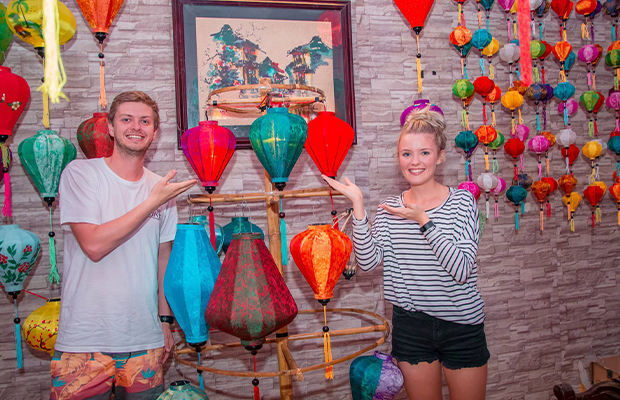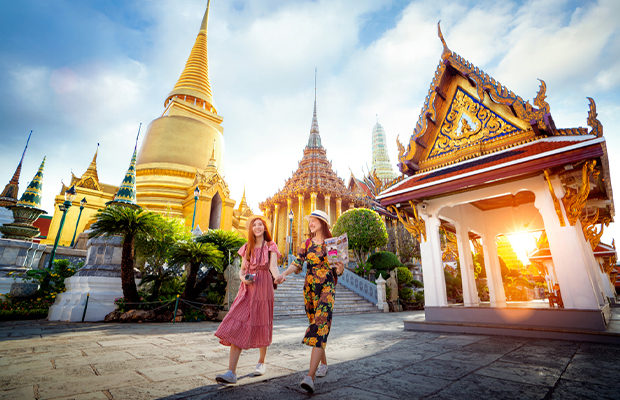How to Plan an Indochina Tour for the First-time Traveler?
Located in the heart of Southeast Asia, Indochina generally refers to the five countries of Vietnam, Cambodia, Laos, Thailand and Myanmar. If it’s your first time exploring this region, planning ahead can really help your journey go smoothly.
Visas for Vietnam, Cambodia, Laos, Thailand and Myanmar are easy to obtain, and it’s convenient to cross between the major cities by flight. If you have the time, we highly recommend a 21-day tour, including five days in Vietnam, four days each in Cambodia, Laos, Thailand and Myanmar.
Wondering where to begin? Don’t worry—this guide will walk you through everything you need to know, from visa tips to must-see sights. Let’s start planning your Indochina journey together!
![]() Where is Indochina Located? Overview of the Indochina Region
Where is Indochina Located? Overview of the Indochina Region
![]() The Best Time to Visit Indochina: November to February
The Best Time to Visit Indochina: November to February
![]() Top Must-See Destinations in Indochina
Top Must-See Destinations in Indochina
![]() Flight is the Easiest Way to Travel around Indochina Region
Flight is the Easiest Way to Travel around Indochina Region
![]() It’s very Easy to Get Visas for any of Indochina Tour
It’s very Easy to Get Visas for any of Indochina Tour
Where is Indochina Located? Overview of the Indochina Region
Indochina refers to the Southeast Asian continent between India and China. In travel terms, Indochina usually refers to Vietnam, Cambodia, Laos, Thailand and Myanmar. These countries share many cultural ties and are connected by the Mekong River. Locals often visit Indochina together on one trip.
Vietnam is just off the east coast, bordered by China to the north, and the South China Sea to the east. Laos is landlocked and borders Vietnam to the east and Thailand to the west. Cambodia is southwest of Vietnam, borders Thailand, and borders the Gulf of Thailand. Thailand, the Andaman Sea to the west and the Gulf of Thailand to the east. Myanmar borders Laos and Thailand to the east and southeast.
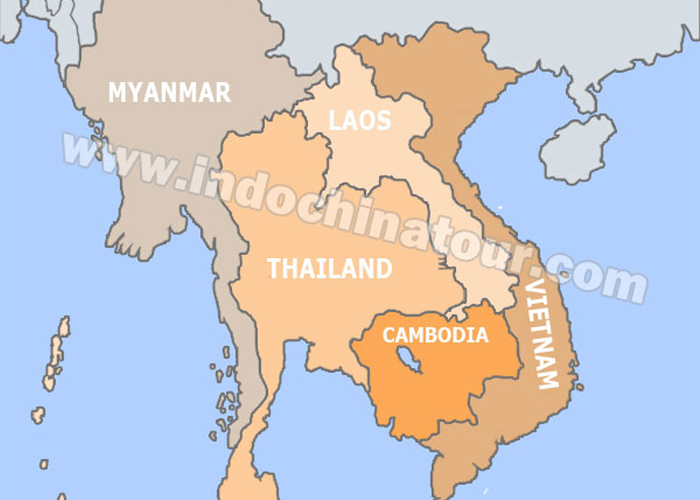
The location map of several Indochina countries.
The Best Time to Visit Indochina: November to February
The five countries of Indochina have different weather and climate patterns. Generally speaking, November to February is the best time for your trip to Indochina. During this period, most days are sunny and there is less rainfall, which is perfect for sightseeing.
Cambodia, Laos, and south Vietnam have similar climates, with only two simple seasons: dry season and rainy season. The dry season lasts from November to April and is the best time to visit, when there is minimal rain and relatively mild temperatures, while the rainy season usually starts in early May and lasts until late October.
North Vietnam is different, with four distinct seasons: spring from March to May, summer from May to August, autumn from September to November, and winter from December to February. To experience the best weather, February to April is the best time.
Thailand and Myanmar have three similar seasons: wet, cool, and hot. The wet season usually lasts from May to October, with abundant rainfall. The cool season is the best time to visit the two countries, lasting from November to February, with cool and pleasant temperatures. The hot season lasts from March to May, with higher temperatures and less rainfall.
Top Must-See Destinations in Indochina
Indochina is full of incredible sights. Here are ten of the most famous destinations (each a highlight on many tours):
Vietnam
Hanoi: The capital city of Vietnam, Hanoi is a great place to start for first-time visitors. The main highlights of the city are the famous Halong Bay nearby, Hanoi Old Quarter, Hoan Kiem Lake, the Temple of Literature, the Mausoleum of Ho Chi Minh, and the Ethnology Museum. Street food in Hanoi is one of the quintessential experiences, you can try banh mi sandwiches and fresh spring rolls.
Ho Chi Minh City (Saigon): Vietnam’s largest city and economic center. There are many places worth visiting in Saigon. The War Remnants Museum and the Reunification Palace tell the history of Vietnam, while the Notre Dame Cathedral and the Central Post Office showcase colonial architecture. You can also visit the Mekong Delta or the Cu Chi Tunnels outside the city.
Cambodia
Phnom Penh: The capital of Cambodia, with both the weight of history and the hustle and bustle of the city, such as the Royal Palace and Silver Pagoda in traditional Khmer architecture, the National Museum, and the Tuol Sleng Genocide Museum and Killing Fields Memorial. And the Russian Market in Phnom Penh is another good place for handicraft lovers. For street food, try Amok (fish in coconut curry) and Baisak (pork rice).
Angkor Wat: Sunrise is the best time to see Angkor Wat, with its reflection in the morning pool. Other must-see temples include Bayon, famous for its more than 200 smiling stone statues; Ta Prohm, which is surrounded by dense tree roots; Banteay Srei, a pink sandstone carved temple; and more. Cycling or renting a tuk-tuk to get around the temples is a typical option.
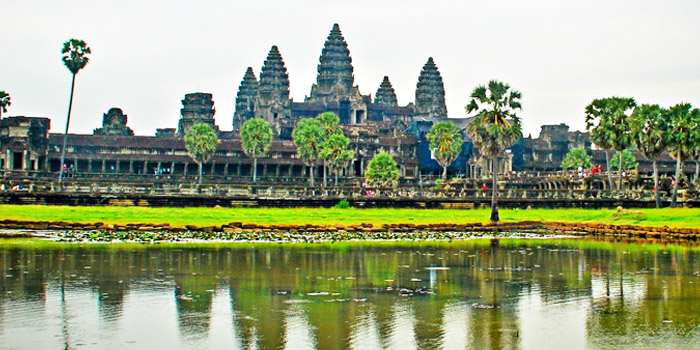
The magnificent Angkor Wat reflected in the lake.
Laos
Luang Prabang: Wat Xieng Thong is Luang Prabang’s most famous temple, with its gilded roof and classic Laotian architecture. Climb Mount Phousi (located in the center of town) to enjoy a stunning sunset panorama over Luang Prabang’s rivers and rooftops. Just a short distance out of town is the Kuang Si Falls – a multi-tiered waterfall perfect for swimming.
Vientiane: In Vientiane, visit Pha That Luang, the most important golden stupa in Laos; the Patuxai, a monument often called the "Arch of Vientiane"; Wat Si Saket, famous for its cloisters filled with thousands of Buddha statues; and Buddha Park, located on the banks of the Mekong River outside the city, which features more than 200 Hindu and Buddhist statues. In the evening, stroll along the Mekong River, where leisurely night markets and street stalls sell roasted sticky rice.
Thailand
Bangkok: The capital of Thailand, it offers both modern comforts and a wealth of cultural attractions, include the Grand Palace and impressive Buddhist temples such as Wat Arun and Wat Pho. You can also visit Chatuchak Market, take a boat trip on the Chao Phraya River, and taste street food such as Tom Yum Goong and Pad Thai.
Chiang Mai: The city's slow pace and rich culture make it a highlight, and it attracts many tourists with its hundreds of temples, the famous Wat Phra Singh (built in the 14th century), and the night market selling crafts and food. Don't miss taking a Thai cooking class or visiting the nearby elephant sanctuary.
Myanmar
Yangon: It offers a glimpse into Myanmar culture, from sampling traditional teahouses, taking a circular train to visiting markets, and exploring Chinatown. The 98-meter-tall Shwedagon Pagoda is Myanmar’s most sacred Buddhist shrine and a landmark on the Yangon skyline.
Mandalay: The center of Burmese culture and Buddhism, you can visit the Mahamuni Pagoda, the world’s largest marble Buddha statue, and admire traditional crafts such as gold leaf making. In the north of the city, nearby are famous attractions such as the ruins of the Mandalay Palace and U Bein Bridge, a 2nd-century AD teak bridge in the ancient city of Amarapura.
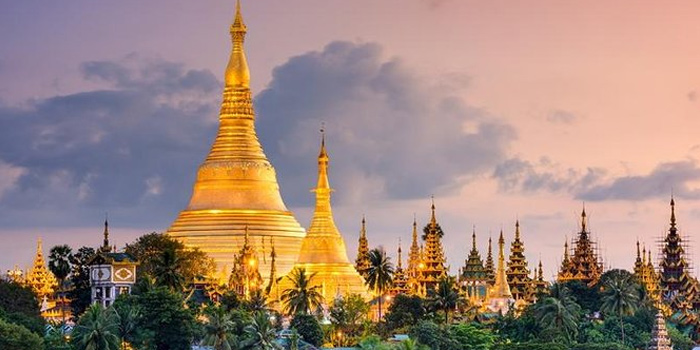
The largest marble Buddha statue in the world, Mahamuni Pagoda in Yangon.
Flight is the Easiest Way to Travel around Indochina Region
Flying is the best way to get into Indochina for the first time, and the airports in Hanoi, Phnom Penh, Luang Prabang, and more are modern and convenient. Vietnam Airlines, VietJet, Cambodia Angkor Air, Laos Airlines and budget carriers like AirAsia link the capitals and major cities. You can take an international flight to any of these five countries and start exploring the region from there.
Usually, you can first arrive at Noi Bai International Airport in Hanoi, Vietnam. Then it only takes about two hours to fly to Tan Son Nhat International Airport in Saigon. From Saigon, you can reach Siem Reap International Airport in Cambodia in one hour, and then fly 45 minutes to Phnom Penh International Airport.
Then enter Laos, Phnom Penh to Wattay International Airport in Vientiane, which takes about 90 minutes, and from here you need 40 minutes to Luang Prabang International Airport. Next, it takes 80 minutes to fly to Suvarnabhumi Airport in Bangkok, Thailand, and 65 minutes to Chiang Mai International Airport.
Finally, it comes to Myanmar. From Chiang Mai to Mandalay International Airport takes 80 minutes, and you just need one hour to get to the last destination, Yangon International Airport.
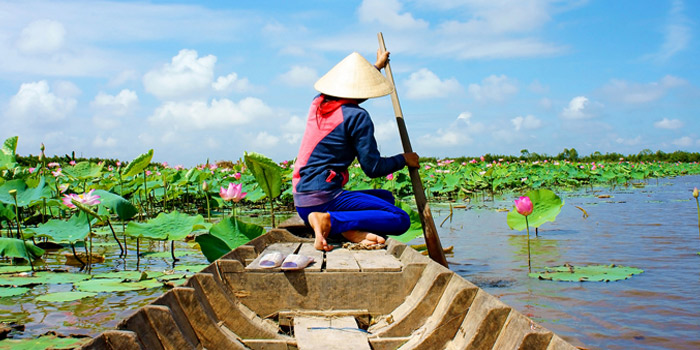
Beautiful boat tour on the Mekong River in Vietnam.
It’s very Easy to Get Visas for any of Indochina Tour
Getting a tourist visa for Indochina is very easy. Each country offers an e-visa or visa on arrival for most nationalities, with the e-visa being the most recommended.
For Vietnam visa, e-visa is much more convenient and faster than visa on arrival; Myanmar needs to apply for e-visa in advance; Cambodia and Laos both allow visa on arrival at airports and land borders, and you need to bring multiple passport photos and cash.
Thailand is the easiest of all the countries to enter, and many nationalities can visit for short periods without a Thailand visa. If you do need a visa, Thailand also offers e-visas and visas on arrival.
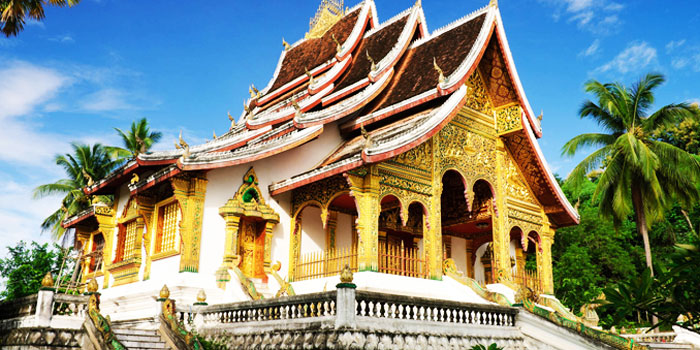
Wat Xieng Thong, the most famous Laotian-style temple in Luang Prabang.
21+ Days is Our Most Recommended Indochina Tour Length
For first-time travelers, we recommend a total of at least 21 days or more to travel the entire Indochina Peninsula. This way you can explore each country at a leisurely pace without being too rushed.
Due to its long and narrow terrain, it takes at least five days to travel Vietnam from north to south. Staying for four days each in Cambodia, Laos, Thailand and Myanmar is a more reasonable arrangement for a 21-day Indochina itinerary.
If there is more time, you can explore more remote areas at a leisurely pace or relax on the beach. This way, you can truly appreciate the local culture, natural scenery, and enjoy convenient travel without rushing from one city to another.
Conclusion
Planning an Indochina tour for the first-time traveler is much easier than you think! Just choose a dry season with pleasant weather, plan your itinerary more than 3 weeks in advance, take the convenient flights between cities, and visit popular destinations such as Hanoi, Saigon, Siem Reap, and more.
With tourist-friendly visas, delicious street food, and amazing scenery, a trip to Vietnam, Cambodia, Laos, Thailand and Myanmar will be unforgettable. Now you can start planning the best Indochina trip - the journey of a lifetime is waiting!
More Related Indochina Travel Planning Articles
Most Popular Indochina Tour Packages
-
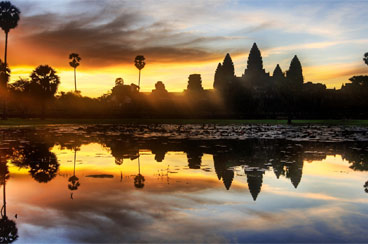 33 days Vietnam, Cambodia, Laos, Thailand and Myanmar Panorama of Indochina Tour
33 days Vietnam, Cambodia, Laos, Thailand and Myanmar Panorama of Indochina TourHanoi - Halong Bay - Hoi An - Saigon - Siem Reap - Luang Prabang - Chiang Rai - Chiang Mai - Mandalay - Bagan - Inle Lake - Yangon
Looking for a long vacation in Indochina? Here is your choice. This more than one month tour is designed for those who want ...
-
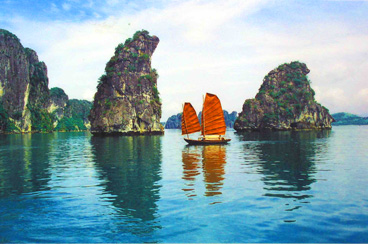 30 Days Vietnam, Cambodia, Laos, Thailand and Myanmar Panorama Tour
30 Days Vietnam, Cambodia, Laos, Thailand and Myanmar Panorama TourHanoi - Halong Bay - Hoi An - Saigon - Siem Reap - Phnom Penh - Vientiane - Luang Prabang - Bangkok - Chiang Rai - Chiang Mai - Mandalay - Bagan - Inle Lake - Yangon
This 30 days tour from Vietnam to Cambodia, Laos, Thailand and Myanmar is designed for those who want a panorama view of ...
-
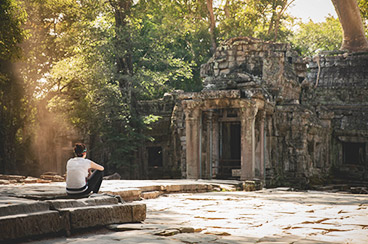 25 Days Panorama of Indochina Tour with Goldden Triangle
25 Days Panorama of Indochina Tour with Goldden TriangleSaigon - Can Tho - Hoi An - Hanoi - Halong - Siem Reap - Luang Prabang - Chiang Rai - Golden Triangle - Chiang Mai - Yangon - Bagan - Inle - Mandalay
This epic and well-designed journey covers the five most popular countries in Southeast Asia - Vietnam, Cambodia, Laos, Thail ...
-
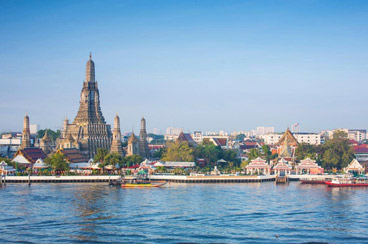 26 Days Thailand, Myanmar, Laos, Cambodia, and Vietnam Relaxing Tour
26 Days Thailand, Myanmar, Laos, Cambodia, and Vietnam Relaxing TourBangkok - Mandalay - Inle Lake - Bagan - Yangon - Chiang Mai - Chiang Rai - Luang Prabang - Vientiane - Phnom Penh - Siem Reap - Phu Quoc
This 26-day tour covers five countries of Southeast Asia, including Thailand, Myanmar, Laos, Cambodia and Vietnam. With this ...
-
.jpg) 28 Days Indochina Panorama Classic Highlights Tour
28 Days Indochina Panorama Classic Highlights TourSaigon - Hoi An - Hanoi - Halong Bay - Luang Prabang - Siem Reap - Bangkok - Chiang Rai - Chiang Mai - Mandalay - Bagan - Inle Lake - Yangon
This 28-day indochina tour is designed for those who want to experience the best of Vietnam, Cambodia and Laos in just one ...
Ask Us A Question For Free

.gif)
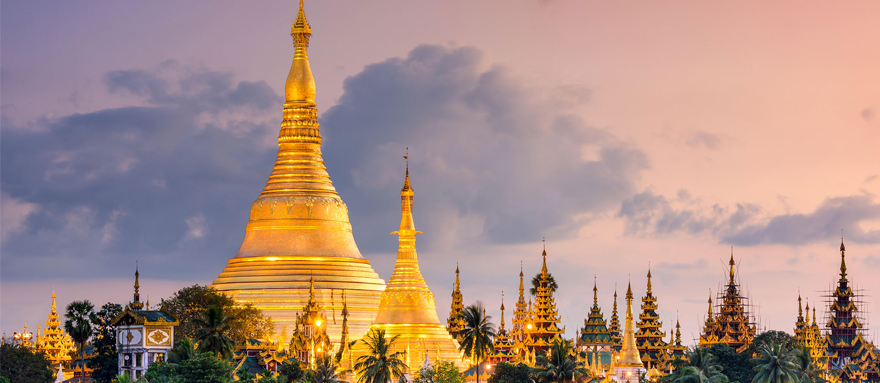
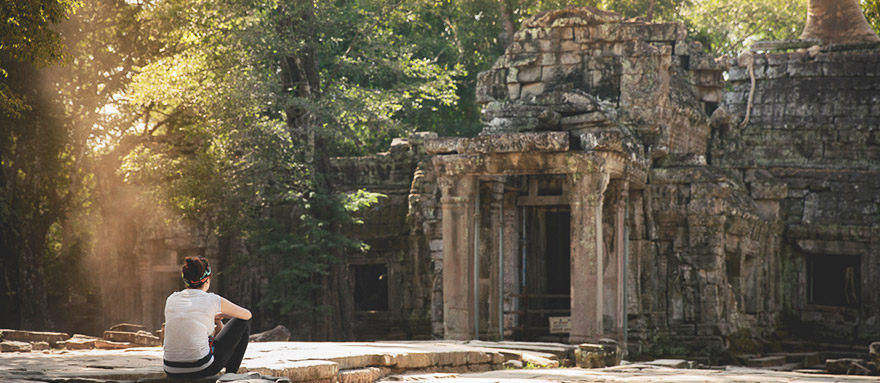
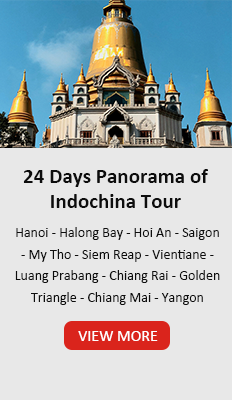
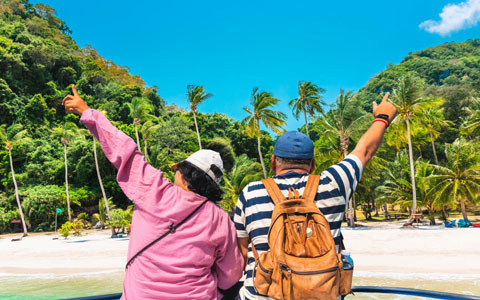
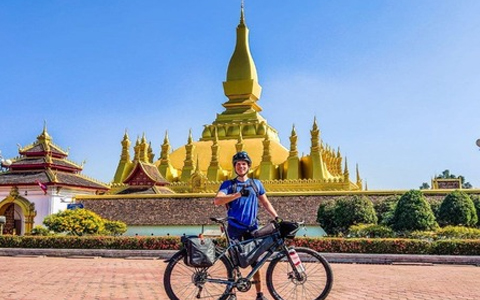

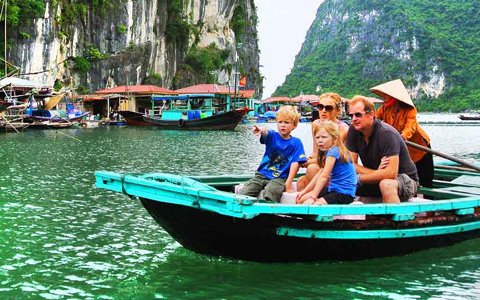
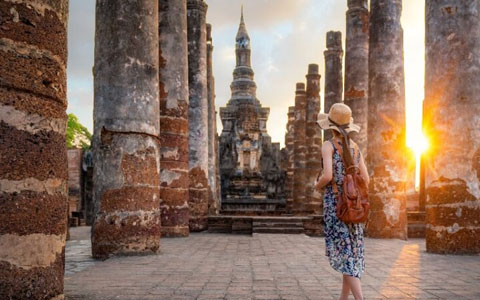
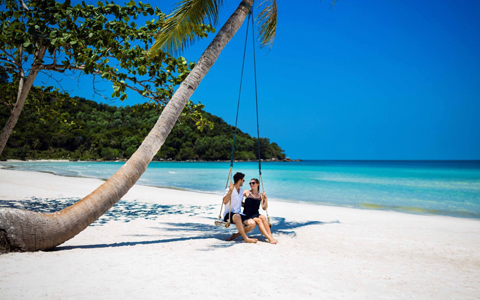
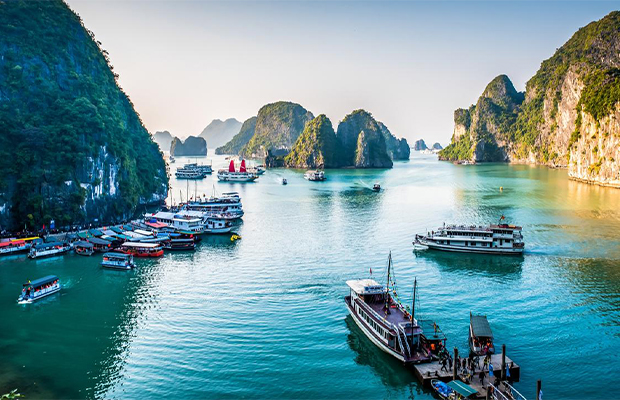
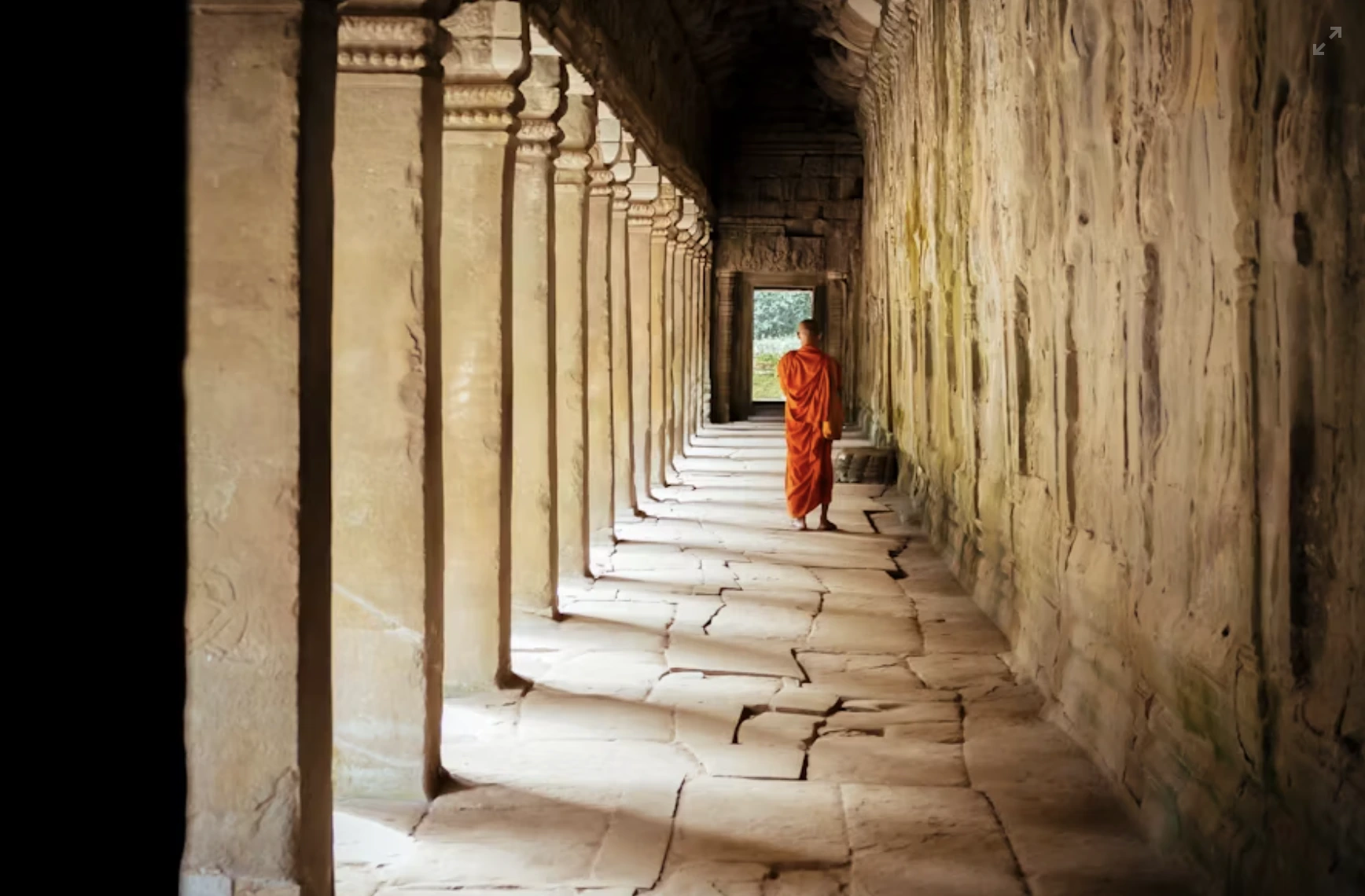
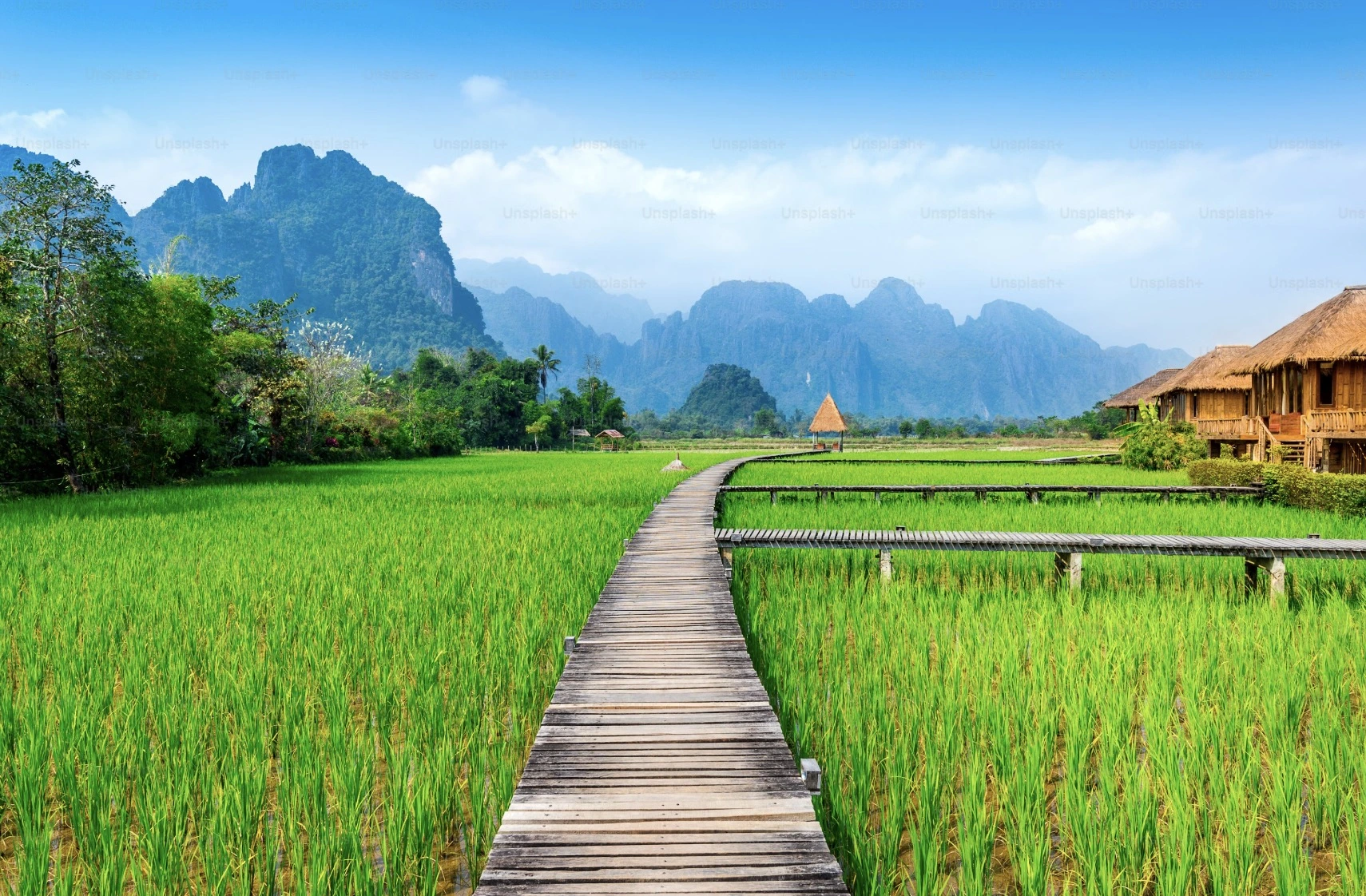
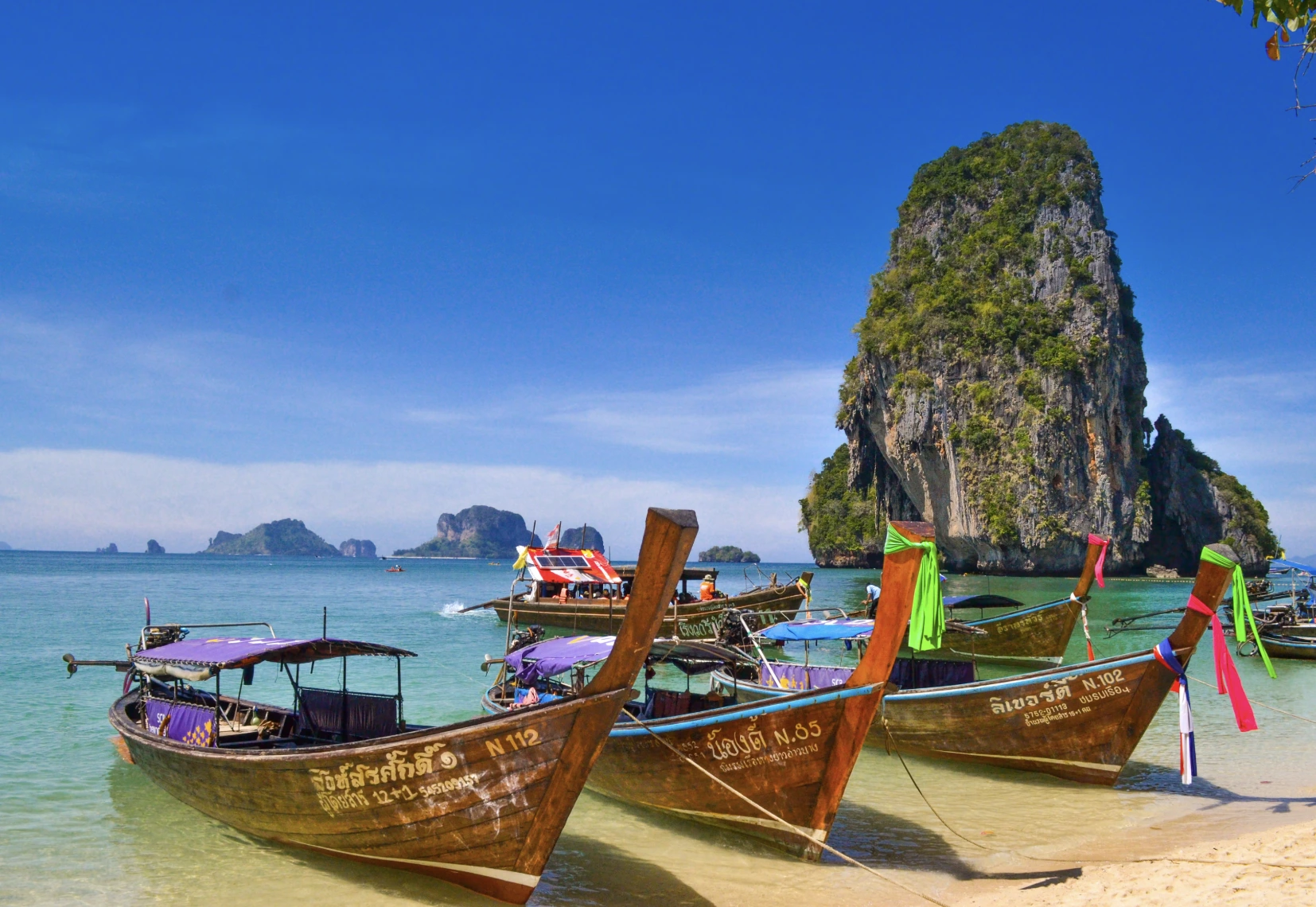
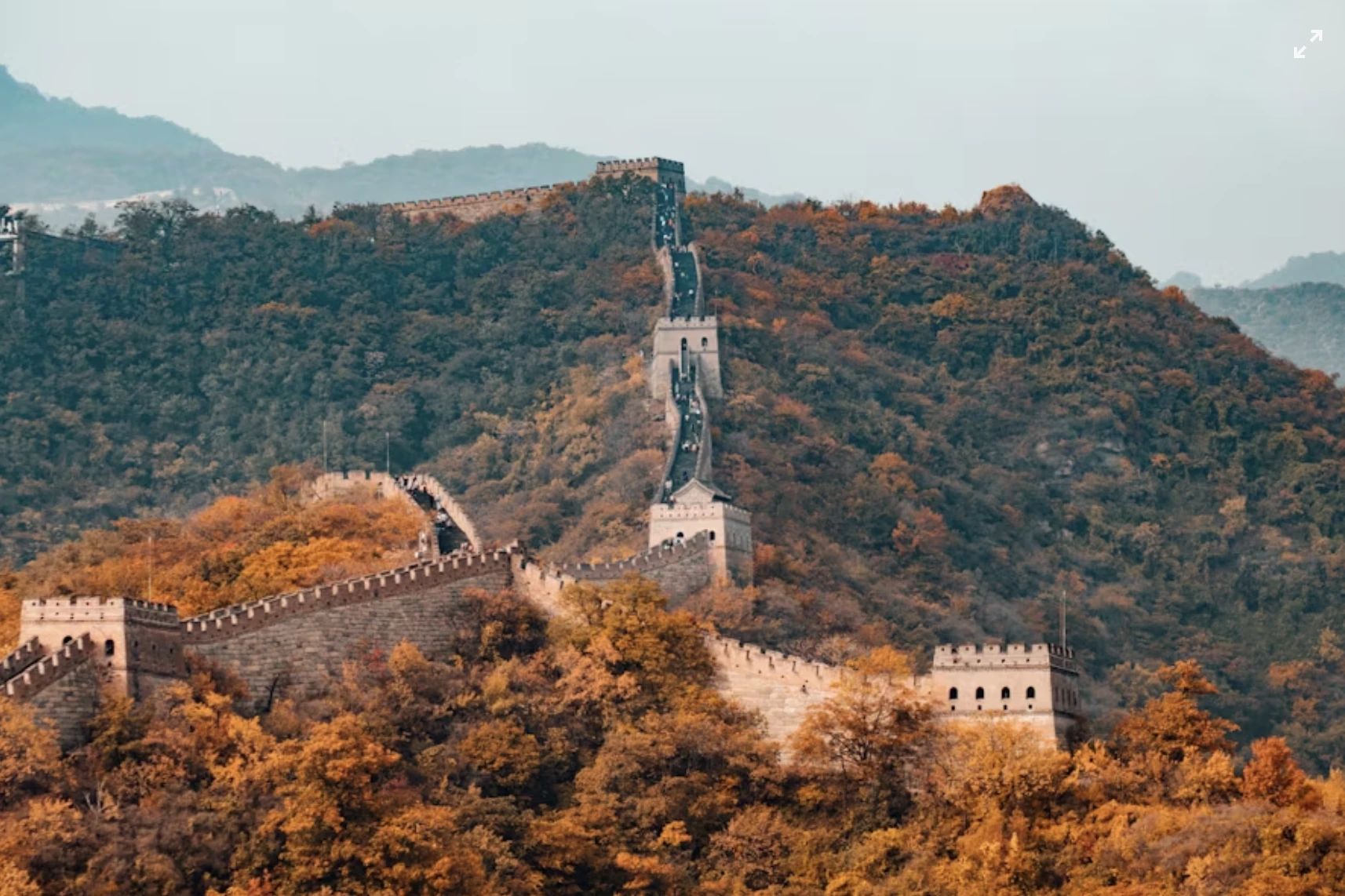


















.jpg)
